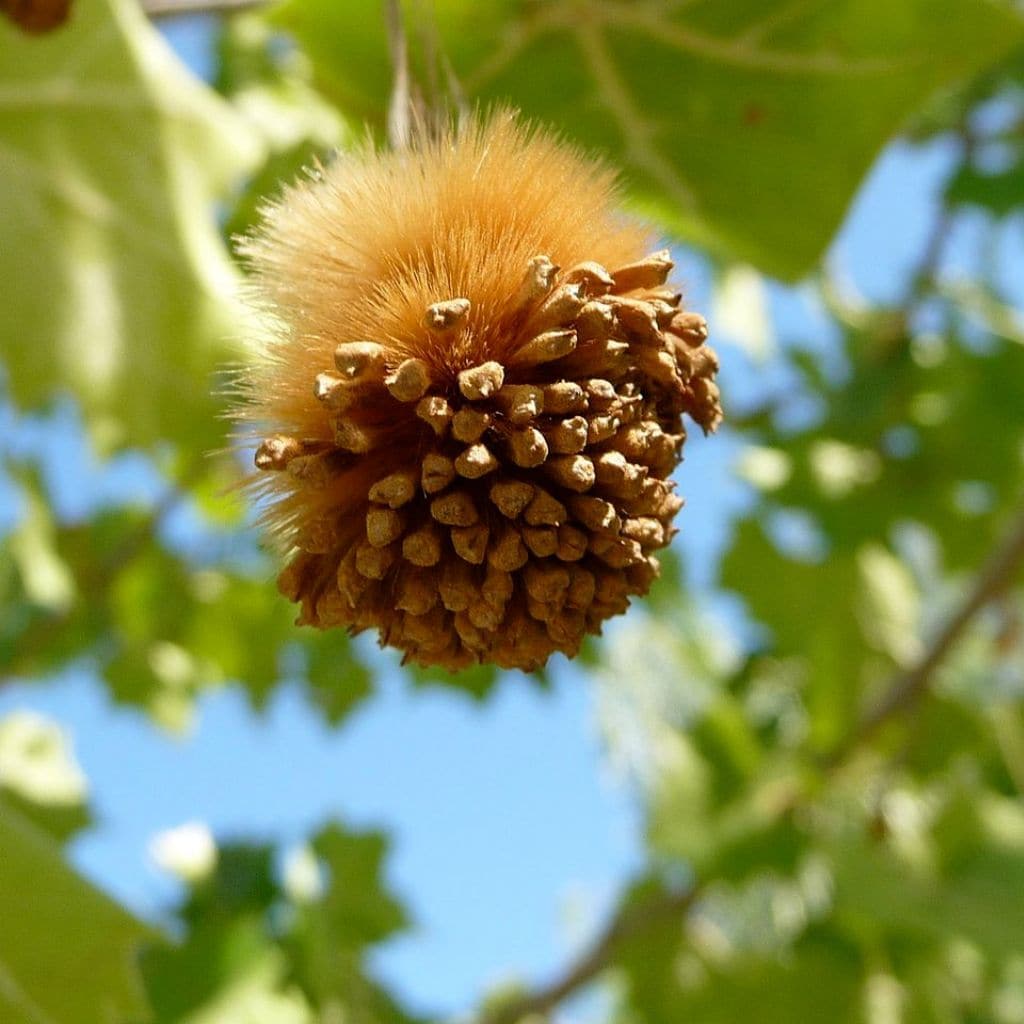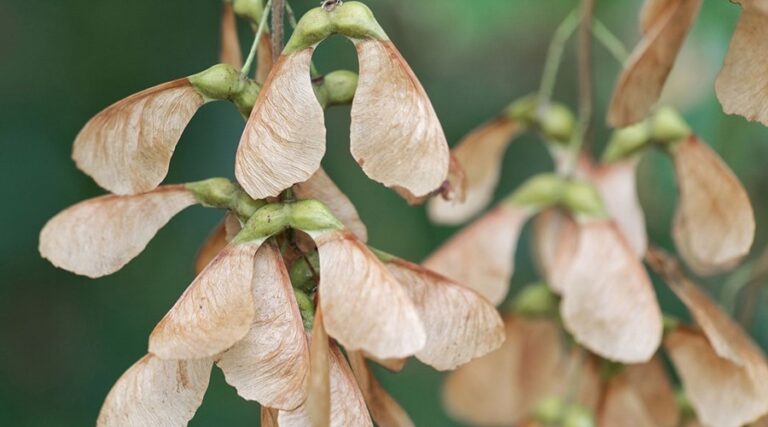Sycamore trees sometimes make lots of seeds in certain years. This happens because of different things like good weather, enough water, and the right temperature during the growing season. Bees and other insects help in making more seeds by pollinating the trees. Healthy trees with lots of water and sunlight also produce more seeds. Trees have their own natural cycles, and factors like their genes, age, and changes inside the tree affect how many seeds they make.
Moreover, these things together make some years have lots of sycamore seeds, which helps the trees survive and grow better. But why exactly this happens can change depending on where the trees are growing.
What Are the Key Factors Affecting Sycamore Seed Production?

The key factors influencing sycamore seed production include environmental conditions, pollination dynamics, tree health, and resource availability.
Environmental Conditions
Weather Factors (Rainfall, Temperature): Sycamore seed production is significantly affected by weather conditions during the growing season. Adequate rainfall ensures enough moisture for tree growth and seed development. A balance of rainfall is crucial; excessive or insufficient rain can hinder seed production.
Similarly, temperature plays a vital role. Optimal temperatures during flowering and fruiting periods promote successful seed development, while extreme temperatures can disrupt the process.
Seasonal Changes and Their Impact: Seasonal variations influence sycamore seed production. Changes in seasons, particularly in temperate regions, trigger physiological responses in trees.
Spring, typically a time of active growth, is critical for flowering and seed formation. Trees respond differently to varying lengths of daylight and temperature changes, which influence the timing and quantity of seed production.
Pollination and Fertilization
Sycamore trees rely on pollinators, primarily bees and other insects, for the transfer of pollen between flowers. Successful pollination is crucial for seed production. The presence of a diverse and abundant population of pollinators ensures effective fertilization, contributing to increased seed yields.
However, fluctuations in pollinator populations due to factors like habitat loss or pesticide use can impact pollination success and subsequently affect seed production.
Once pollination occurs, successful fertilization leads to the development of seeds. Adequate pollen transfer and compatibility between pollen and ovules are essential for fertilization.
Factors like pollen quality, availability, and the health of reproductive structures within the flowers influence the rate of successful fertilization, ultimately affecting seed production.
Resource Availability
Sycamore trees require sufficient water, nutrients (such as nitrogen, phosphorus, and potassium), and sunlight for optimal growth and seed production. Water availability is crucial during critical growth stages, ensuring the development of healthy seeds.
Adequate sunlight promotes photosynthesis, enabling the tree to produce the energy required for seed production. Nutrients play a fundamental role in overall tree health, influencing flowering and seed development.
The health of a sycamore tree directly impacts its ability to produce seeds. Trees experiencing stress due to factors like disease, pests, or poor environmental conditions allocate resources towards survival rather than reproduction.
Consequently, stressed trees might produce fewer seeds or redirect resources away from seed production, impacting the quantity or quality of seeds produced.
Biological Triggers
Sycamore trees, like many others, have inherent biological cycles that influence seed production. These cycles may vary in duration and intensity, leading to years of abundant seed production (mast years) followed by periods of lower seed yield.
Factors such as internal clock mechanisms, hormonal fluctuations, and environmental cues contribute to these natural cycles.
Genetic factors within sycamore populations can influence the frequency and intensity of mast years. Additionally, as trees age, their reproductive patterns may change, affecting seed production. Hormonal changes within the trees, such as fluctuations in auxin or cytokinin levels, play a role in regulating flowering, fruiting, and ultimately seed production. These hormonal shifts can be influenced by environmental cues or internal tree processes
What Role Do Mast Years Play in Evolutionary Strategies?
Mast years play a pivotal role in evolutionary strategies by influencing reproductive success, seed dispersal, and population dynamics among tree species.
Explanation of Mast Years in Sycamore Trees
Mast years refer to irregular cycles in which sycamore trees produce a significantly larger quantity of seeds than usual. These cycles are not exclusive to sycamores; many tree species exhibit this behavior.
The occurrence of mast years is not precisely predictable and can vary in timing and intensity. During many years, sycamore trees synchronize to produce an abundance of seeds, which can cover the ground under the trees and often stand out due to their sheer numbers.
Survival Advantages of Prolific Seed Production:
Prolific seed production during mast years provides several survival advantages for sycamore trees. Firstly, it overwhelms seed predators like insects, birds, and mammals. The sheer abundance of seeds ensures that despite increased predation, a significant number of seeds can escape consumption, allowing for better chances of germination and growth.
Secondly, higher seed production increases the likelihood of successful seed dispersal. Some seeds will travel farther away from the parent tree, reducing competition among offspring and enhancing the species’ genetic diversity.
Moreover, abundant seeds increase the probability of finding suitable conditions for germination and growth. By producing a surplus during mast years, sycamore trees improve their chances of ensuring the survival of the next generation, contributing to the overall persistence of the species.
Conservation of Energy in Alternating Years

In contrast to mast years, sycamore trees often experience years with lower seed production. This alternation in seed output allows the trees to conserve energy in non-mast years. Trees divert resources that would otherwise go into seed production towards other crucial functions, such as growth, defense mechanisms against pests and diseases, and overall maintenance of health.
This energy conservation strategy is vital for the long-term survival and health of the tree. It enables the tree to recover and accumulate resources, preparing for potential future mast years.
During non-mast years, the tree allocates resources towards strengthening its root system, building up its energy reserves, and maintaining its health. This cyclic pattern of high and low seed production not only benefits the individual tree’s vitality but also contributes to the resilience and sustainability of the species as a whole within its ecosystem.
FAQ’s
What do sycamore seeds symbolize?
Sycamore seeds can symbolize strength, growth, and resilience due to the tree’s ability to produce abundant seeds even in challenging conditions.
What is special about Sycamore?
Sycamore trees are notable for their large, distinctive leaves, unique mottled bark, and their capability to adapt and grow in various environmental conditions.
What is the myth of the sycamore tree?
In some cultures, the sycamore tree symbolizes protection, eternity, and transformation, often associated with myths portraying it as a shelter for deities or spirits.
Why is the sycamore tree in the Bible?
The sycamore tree is mentioned in the Bible, notably in the story of Zacchaeus, highlighting its significance in biblical narratives and its association with repentance and change.
Are Sycamore trees sacred?
In certain cultures and historical contexts, sycamore trees have been considered sacred due to their symbolism, association with myths, or religious significance in various belief systems.
What is sycamore in the Bible?
In the Bible, the sycamore tree is referenced in passages such as the story of Zacchaeus in the Gospel of Luke, illustrating its relevance in biblical stories and teachings.
Final Words
Understanding why sycamore trees produce many seeds involves different things like the weather, pollination by bees and insects, having enough water and sunlight, and the tree’s natural cycles. These factors play a big role in how many seeds the trees make. Some years they make lots of seeds (mast years) to survive better, while other years they make fewer to save energy. By knowing these reasons, we can better understand how sycamore trees grow and thrive.

